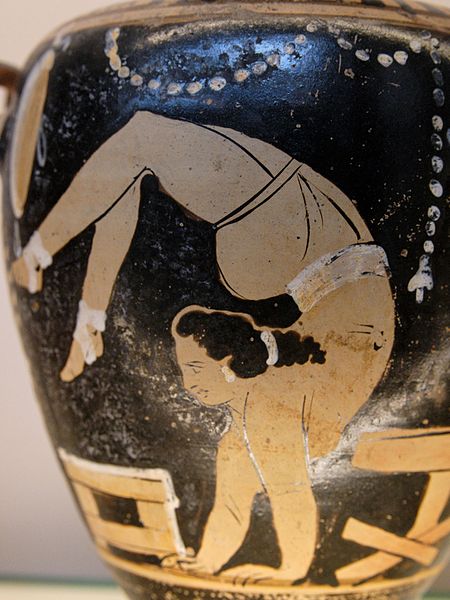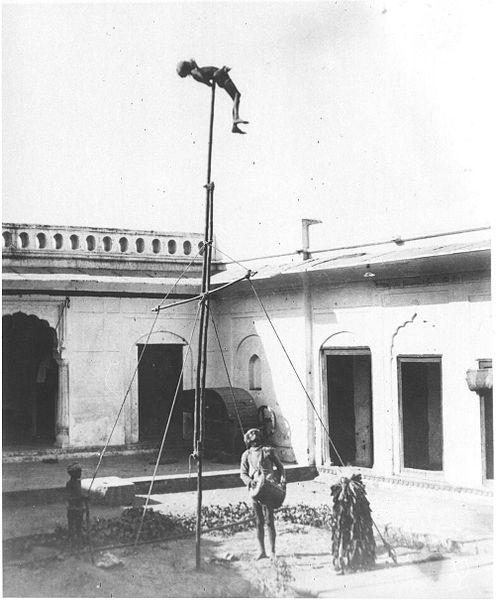Acro dance is a style of dance that combines classical dance technique with acrobatic elements. It is defined by its athletic character, its unique choreography, which blends dance and acrobatics, and its use of acrobatics in a dance context. It is a popular dance style in amateur competitive dance as well as in professional dance theater and in contemporary circus productions such as those by Cirque du Soleil. This is in contrast to acrobatic, artistic and rhythmic gymnastics, which are sports that employ dance elements in a gymnastics context under the auspices of a governing gymnastics organization and subject to a Code of Points. Acro dance is known by various other names including acrobatic dance and gymnastic dance, though it is most commonly referred to simply as acro by dancers and dance professionals.
An elbow stand, performed as part of an acro dance routine
Vaudeville dancer La Sylphe (c. 1908)
Shoulder stand
A pair of acro shoes
Acrobatics is the performance of human feats of balance, agility, and motor coordination. Acrobatic skills are used in performing arts, sporting events, and martial arts. Extensive use of acrobatic skills are most often performed in acro dance, circus, gymnastics, and freerunning and to a lesser extent in other athletic activities including ballet, slacklining and diving. Although acrobatics is most commonly associated with human body performance, the term is used to describe other types of performance, such as aerobatics.
A showgirl performing aerial silk
A female acrobat depicted on an Ancient Greek hydria, c. 340–330 BC.
Female acrobat shooting an arrow with a bow in her feet; Gnathia style pelikai pottery; 4th century BC
Acrobatic performance in India c. 1863








